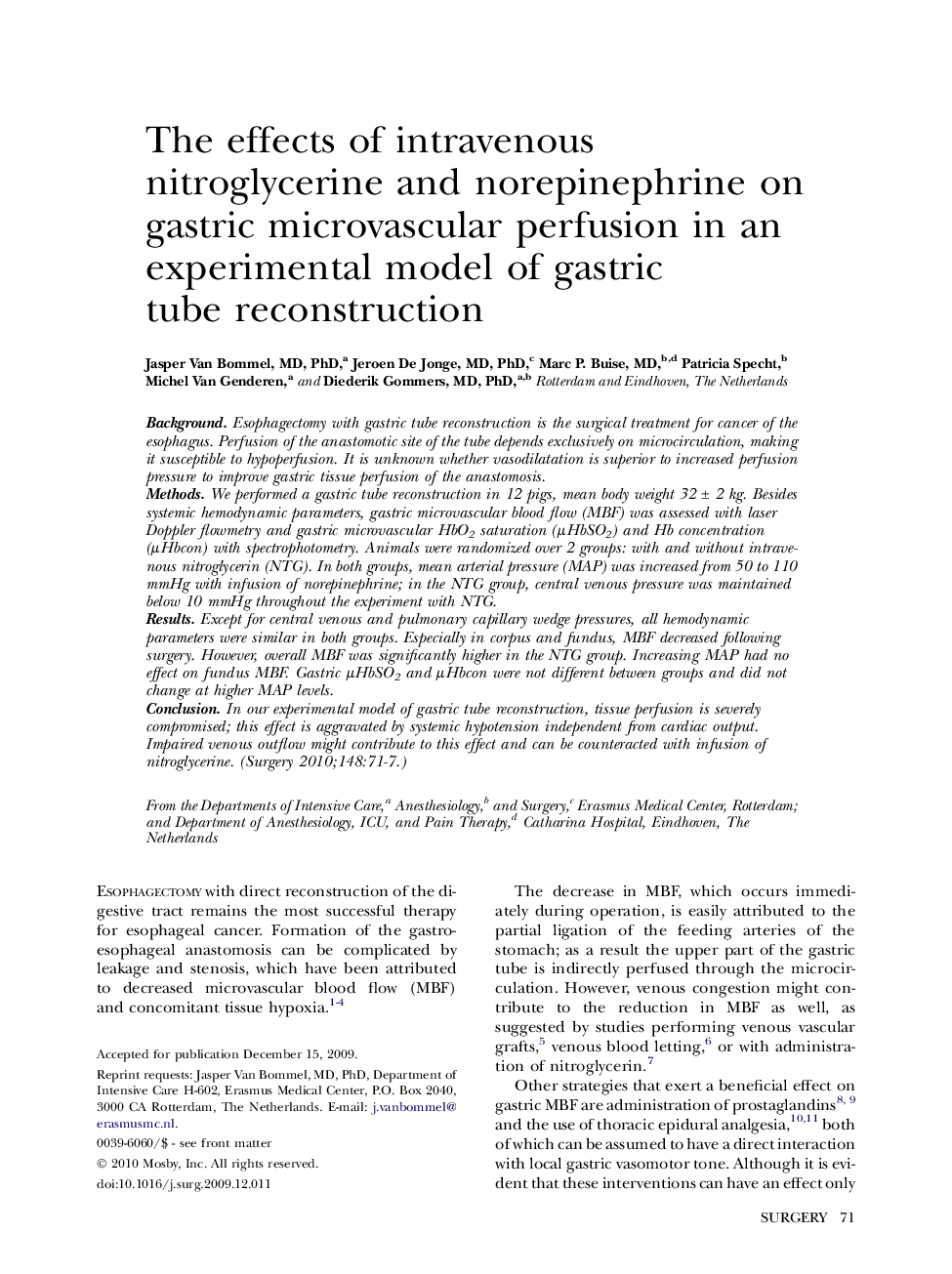| Article ID | Journal | Published Year | Pages | File Type |
|---|---|---|---|---|
| 4308671 | Surgery | 2010 | 7 Pages |
BackgroundEsophagectomy with gastric tube reconstruction is the surgical treatment for cancer of the esophagus. Perfusion of the anastomotic site of the tube depends exclusively on microcirculation, making it susceptible to hypoperfusion. It is unknown whether vasodilatation is superior to increased perfusion pressure to improve gastric tissue perfusion of the anastomosis.MethodsWe performed a gastric tube reconstruction in 12 pigs, mean body weight 32 ± 2 kg. Besides systemic hemodynamic parameters, gastric microvascular blood flow (MBF) was assessed with laser Doppler flowmetry and gastric microvascular HbO2 saturation (μHbSO2) and Hb concentration (μHbcon) with spectrophotometry. Animals were randomized over 2 groups: with and without intravenous nitroglycerin (NTG). In both groups, mean arterial pressure (MAP) was increased from 50 to 110 mmHg with infusion of norepinephrine; in the NTG group, central venous pressure was maintained below 10 mmHg throughout the experiment with NTG.ResultsExcept for central venous and pulmonary capillary wedge pressures, all hemodynamic parameters were similar in both groups. Especially in corpus and fundus, MBF decreased following surgery. However, overall MBF was significantly higher in the NTG group. Increasing MAP had no effect on fundus MBF. Gastric μHbSO2 and μHbcon were not different between groups and did not change at higher MAP levels.ConclusionIn our experimental model of gastric tube reconstruction, tissue perfusion is severely compromised; this effect is aggravated by systemic hypotension independent from cardiac output. Impaired venous outflow might contribute to this effect and can be counteracted with infusion of nitroglycerine.
